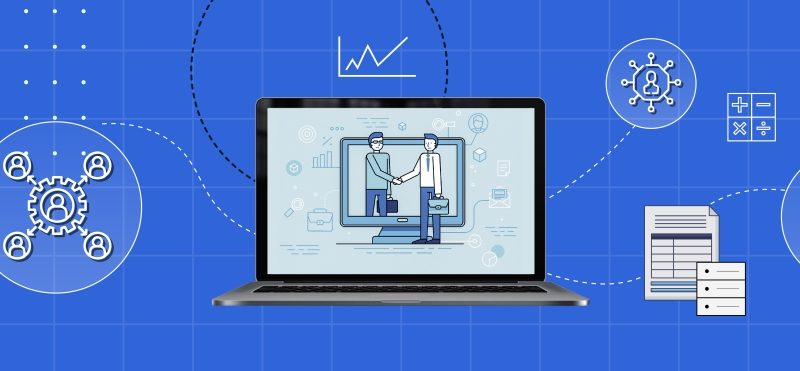As a business owner, it’s crucial to stay on top of your tax obligations to avoid penalties and fines from the IRS and file a number of forms. One of the most important tax forms to file is Form 941, also known as the Employer’s Quarterly Federal Tax Return. In this article, we’ll provide you with a detailed overview of Form 941, including what it is, who needs to file it, and how to do it.
What is Form 941?
Form 941 is a tax form used by employers to report their quarterly payroll taxes, including federal income tax, social security tax, and Medicare tax. It is filed four times a year and is used to report the taxes collected from employees’ wages and the employer’s portion of social security and Medicare taxes. This form is crucial for the IRS to track your tax liabilities, and it’s essential to file it accurately and on time.
Who Needs to File the IRS Form 941?
Filing Form 941 is a requirement for all employers who pay wages to employees, regardless of the number of employees or the amount of taxes withheld. This includes full-time, part-time, and seasonal employees, as well as household employees. Even if you only have one employee, you need to file Form 941.
It’s important to note that certain types of employers have different requirements for filing Form 941. For example, agricultural employers have specific rules regarding the timing of their tax deposits, while employers with household employees have different thresholds for reporting wages and taxes. It’s essential to understand the specific requirements for your business to ensure that you are filing Form 941 correctly.
If you fail to file Form 941, the IRS can impose penalties and fines. The penalty for not filing Form 941 is 5% of the unpaid tax liability for each month the return is late, up to a maximum of 25% of the unpaid tax liability. If the return is more than 60 days late, the penalty increases to the lesser of $435 or 100% of the unpaid tax liability.
Read more about the payroll taxes each employer has to file.
When is Form 941 Tax Return Due?
The IRS form 941 is due quarterly. It’s important to note that the deadline is not the same for all employers, and it’s based on the end of the tax year. The due date for each quarter is as follows:
- 1st Quarter (January – March): April 30th
- 2nd Quarter (April – June): July 31st
- 3rd Quarter (July – September): October 31st
- 4th Quarter (October – December): January 31st
How to Fill out Form 941?
Filling out Form 941 may seem complicated, but it’s essential to get it right. You can file Form 941 manually by mail or online using tax filing services like TurboTax or hiring an expert to file it for you. When filling out the form, you’ll need to provide information about your business, the number of employees, the amount of wages paid, and the taxes withheld. You’ll also need to calculate the total tax liability and make the necessary payments. Here are the exact steps you need to take:
Step 1: Collect Information about Your Business and Employees
Before filling out Form 941, you’ll need to gather information about your business, including your Employer Identification Number (EIN), business name, and address. You’ll also need information about your employees, including their names, Social Security numbers, and wages paid during the quarter.
Step 2: Calculate the Taxes Owed
The next step is to calculate the taxes owed for the quarter. Form 941 includes four parts, and you’ll need to complete each section to determine the amount of taxes owed:
- Part 1 – information about the number of employees and wages paid
- Part 2 – information about the taxes withheld from employees’ paychecks, including federal income tax, Social Security tax, and Medicare tax
- Part 3 – information about the employer’s share of Social Security and Medicare taxes
- Part 4 – is where you calculate the total taxes owed.
Step 3: Make the Payment
Once you’ve calculated the taxes owed, you’ll need to make the payment. You can pay online using the Electronic Federal Tax Payment System (EFTPS), by mail using a check or money order, or by using a tax professional or payroll service.
Step 4: File Form 941
After calculating the taxes owed and making the payment, you’ll need to file Form 941. You can file the form online using the IRS’s e-file system or by mail. If you choose to file by mail, make sure to send it to the correct address based on your location.
Step 5: Review and Verify the Information
Before submitting Form 941, it’s essential to review and verify all the information on the form. Make sure all the information is accurate and up-to-date, including your business information, employee information, and tax calculations.
Step 6: Keep a Record of the Form
Finally, make sure to keep a copy of the completed Form 941 and any supporting documents. It’s essential to keep accurate records of all tax returns and payments for future reference.
Find out how to file income tax return.
Why is Tax Form 941 Important?
Form 941 is an essential form for employers to stay compliant with federal tax laws. Filing this form accurately and on time is critical to avoiding penalties and fines from the IRS. Here are some reasons why Form 941 is important:
- Tracks payroll taxes owed. Form 941 allows employers to report and track their quarterly payroll taxes, including federal income tax, Social Security tax, and Medicare tax. This form helps the IRS ensure that employers are meeting their tax obligations and accurately reporting their payroll taxes.
- Helps avoid penalties and fines. Filing Form 941 accurately and on time is crucial to avoiding penalties and fines from the IRS. If an employer fails to file Form 941 or files it late, the IRS can impose penalties and fines. The penalty for not filing Form 941 is 5% of the unpaid tax liability for each month the return is late, up to a maximum of 25% of the unpaid tax liability.
- Ensures proper reporting of taxes filing. Form 941 accurately and on time helps ensure that payroll taxes are properly reported. This form helps employers calculate the taxes owed, make the necessary payments, and report the taxes withheld from employees’ paychecks.
- Provides documentation for audits. By keeping accurate records of Form 941 and other tax returns, employers can provide documentation in case of an audit or other tax-related matter. Having proper documentation can help an employer avoid any future tax issues.
Ease Payroll Tax Filing with Tax Preparation Software
As a business owner, you understand the importance of maintaining accurate financial records. Even minor errors can have significant consequences, leading to unwanted scrutiny from the IRS, including audits, fees, and penalties. Fortunately, there is a simple solution to avoid such situations. By synchronizing your accounting software with payment platforms, you can significantly minimize the risk of discrepancies and make sure the numbers in your tax forms are right.
Synder Sync is a cutting-edge accounting software that ensures accurate importation of transaction data into one centralized source of truth. The software guarantees that all taxes, fees, and shipping costs are allocated correctly in the accounting system and can detect discrepancies with ease. Setting up the software is quick and straightforward, with data synchronization running automatically in the background while you focus on your business and increase revenue.
With Synder Sync, reviewing your financial data becomes a breeze, and all required statements are in order, making fiscal year-end closing a painless process. By using Synder Sync, you can minimize errors and discrepancies, which leads to better financial accuracy and compliance with tax regulations and ensures the long-term success of your business.
Synder offers top-rated customer support, easy set-up, and unprecedented attention to detail. What’s more, the app guarantees the highest level of data security – Synder is SOC2 compliant.
Investing in Synder Sync is a smart move for any business looking to streamline its accounting processes and avoid potential financial mishaps and ensure the security of their data. Try Synder’s 15-day free trial, or book a seat at an upcoming webinar to see what tool can do for your small business. Say goodbye to financial discrepancies and hello to accuracy and compliance with Synder Sync.
Final Words
In conclusion, filing Form 941 is an important task for all businesses that pay wages to employees. The form helps you report and pay your quarterly payroll taxes accurately and on time, keeping you compliant with federal tax laws. Whether you choose to file manually or online, make sure you provide accurate information and meet the filing deadlines to avoid any penalties or fines. If you’re unsure about how to file Form 941 or have any questions, consult an expert or use tax filing services to make the process easier.
Check out the full information about the form here.






